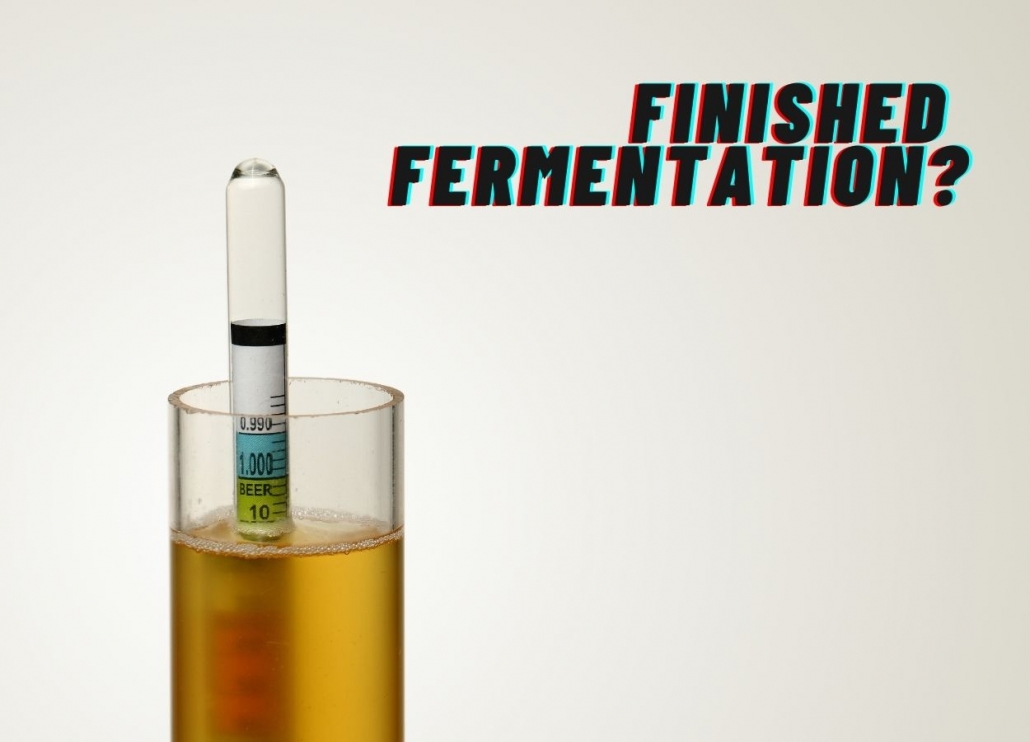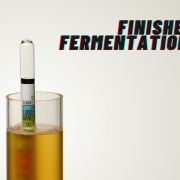Has My Beer Finished Fermentation In 2 – 3 Days?

Fermentation can seem like a mysterious process, especially when you are new to brewing. A common question I see online and asked via Home Brew Answers is around the speed and longevity of a fermentation.
Beer or wine that finishes vigorous fermentation and bubbling in just a couple of days can seem like something hasn’t quite worked out. When looked at objectively, however, it might not be that unusual. Let’s take a look at what is going on.
Table of Contents
How Long Should Fermentation Take?
In a commercial brewery, it is not uncommon for the fermentation of ale to reach final gravity, where nearly all the available sugars have been converted to alcohol in 3 days.
That does not mean to say the beer is ready and can be packaged.
Fermentation temperatures will be maintained for a further 2 days at least for byproducts of fermentation to be reduced. A diacetyl rest allows the yeast to remove compounds that would make the beer taste buttery if not allowed to happen.
There are still all sorts of processes happening to a beer that has finished vigorous primary fermentation and this is why we need to monitor fermentation properly.
How Are You Checking Fermentation Progress?
A lot of the confusion around judging how fermentation is progressing comes down to the way we are monitoring it.
Visual Signs of Fermentation
The most apparent signs are those in which we see. If you are judging fermentation activity and whether or not an ale has completed fermentation by the methods listed below then you may not be getting an accurate picture:
- Airlock bubbling
- Krausen (foam & yeast head) dropping
- Sediment forming
These visual indicators do indicate fermentation activity but they do not tell us that fermentation is complete.
How To Check Fermentation Correctly
The simplest way to monitor a fermentation is with a hydrometer.
No matter what kind of beverage you are making, whether it’s ale, lager, wine, mead or cider the simplest and cheapest way to check the progress is by taking hydrometer readings.
To learn how to use a hydrometer check this guide.
Take Hydrometer Readings
Taking a hydrometer reading before fermentation will give you the starting gravity.
Once fermentation starts you can keep a not on progress with the normal visual signs of airlock activity and krausen forming.
When the majority of activity subsides we can take further readings. The difference of these readings indicates how much sugar has been converted to alcohol by the yeast.
When the hydrometer maintains a reading and falls no further then we can be sure that the fermentation of all available sugars has occurred. This indicates the primary fermentation is complete.
Fermentation Problems
There may be some instances where you think that fermentation activity has stopped but the finishing gravity is too high. This may indicate a stuck fermentation.
Stuck Fermentation
Stuck fermentations can be caused by a variety of reasons:
- Unviable yeast
- Not pitching enough yeast
- Fermentation temperatures to cold
These things among others could prevent a beer or wine fermenting completely. In this case, you may need to intervene. A full guide on dealing with stuck fermentations can be found here.
Fermentation Activity Has Stopped. When To Package Your Beer?

Once your hydrometer readings indicate the yeast have stopped fermenting sugars and there are none left to consume when can you package your beer?
As mentioned earlier on, the conversion of sugars to alcohol leaves certain byproducts and precursors in solution. These byproducts need to be removed by the yeast and they are most efficient when the beer is maintained at fermentation temperature.
This conditioning phase can happen as quickly as two days. It should be noted, however, that there is no reason you cannot leave the beer for 2 or 3 weeks and I would advise this for high ABV beers or any beers that have had additions like fruit.
Settling, Clearing & Cold Crashing
Now that you have taken your hydrometer readings, you conditioned your beer you are nearly ready to bottle or keg it.
At this point what we are waiting for is for the debris and yeast that is still in suspension to drop out. Packaging the beer or wine before this happens will leave you with a poorer finished product.
If you have space and resources, cold crashing your beer in a fridge will speed the process up to a few days. A fridge as a fermentation chamber is a worthwhile investment. Cold crashing will drop a lot of the debris and yeast out of the beer quickly and it can then be packaged.
At room temperature, things will take longer. Yeast will take time to flocculate and other debris and particles need time to sediment too.
Once this happens it is time to bottle.
How Long Should Fermentation Take?
Not every fermentation is the same and no two beers are alike.
I have outlined a typical fermentation schedule before here and using the tips above you should get a feel and understanding of how to judge when fermentation is finished and when you can package your home brew.




Leave a Reply
Want to join the discussion?Feel free to contribute!